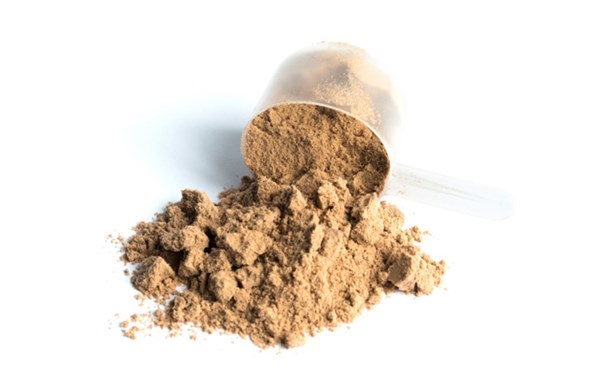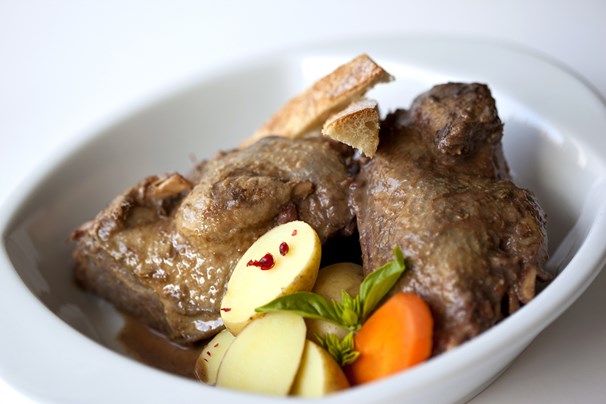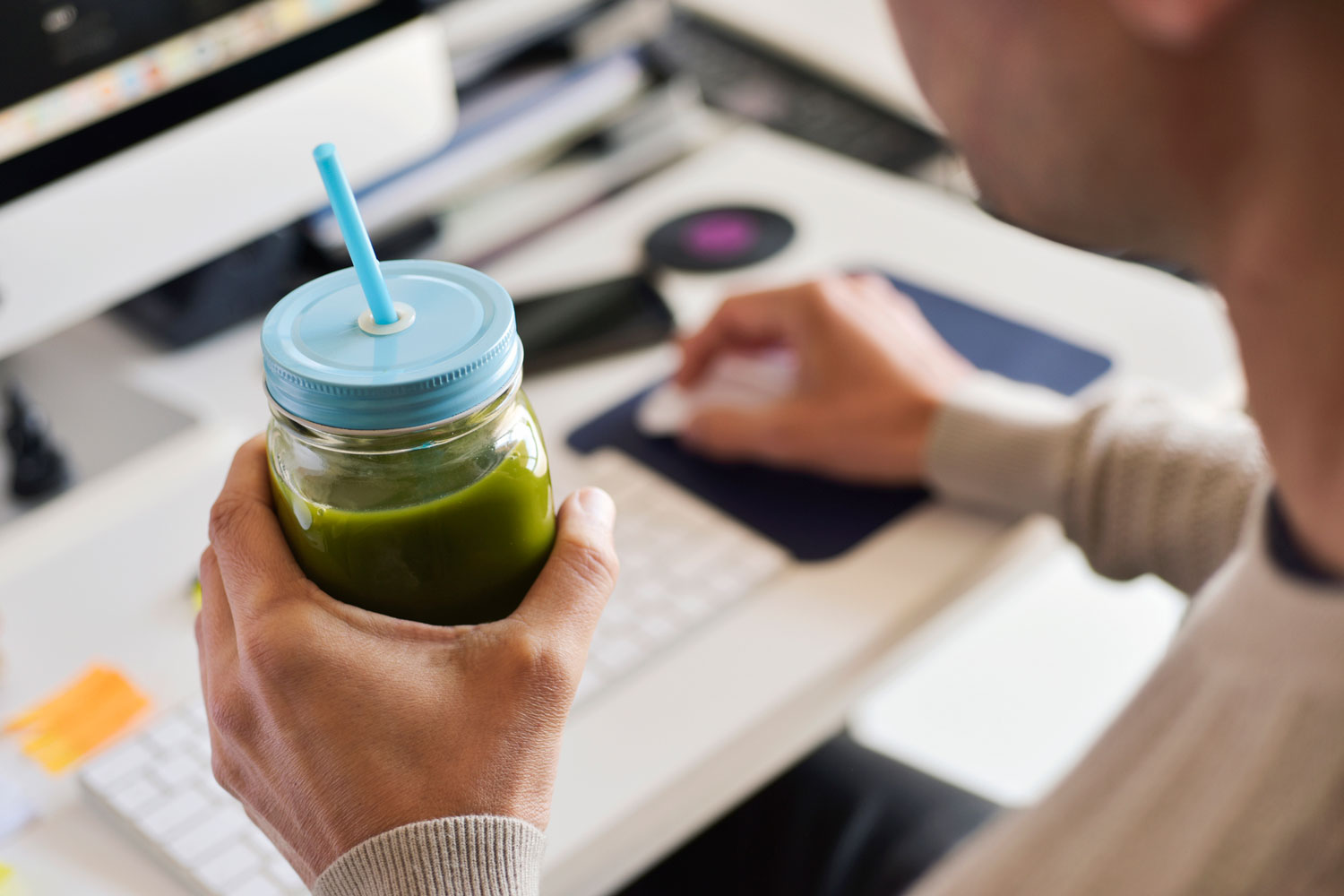The path to ripped abs isn’t the same as the one that leads to a big chest or arms—it has much more to do with the kitchen than it does the gym. Zeroing in on your diet is non-negotiable.
“Nutrition is the gating factor to your success,” says Mike Roussell, PhD, a Men’s Health nutrition adviser. “It is just too hard to burn sufficient calories through exercise, and it’s way too easy to eat extra calories.” In other words, the ab exercises you do and the effort you put into them won’t mean much if you go through dinner buffets like Pete Davidson goes through celebrity girlfriends.
But reining in your eating isn’t as daunting as you might expect. You can put yourself on the road to visible abs inside of 90 days by following these simple steps.
Step 1: Find Your Macros
Okay, you know you need to cut calories to lose fat, but how exactly do you do that? You could just make an effort to eat less, but that’s leaving a lot to chance. How do you know exactly how many calories you’re taking in if you don’t record them? Also, not all calories are created equal. You can achieve a calorie deficit by eating nothing but bread and water, but do you really think you’d look better at the end of 90 days with that strategy?
Roussell recommends breaking your calories down into macronutrients—protein, carbs, and fat—and counting them every day. This isn’t as brutal as it sounds, but it does require you to read food labels and invest in a food scale (you can get one for a few bucks at virtually any grocery store).
Getting the right amount of each macro gives your body the nutrition it needs to hold onto muscle and fuel your workouts without leaving any extra to be stored as fat. No, there isn’t an exact macro formula that will give you abs in 90 days, but the one below from Roussell is a great start.

1. Multiply your bodyweight (in pounds) by 13. This determines the number of calories you’ll eat on your diet. For example, a 190-pound man should start consuming 2,470 calories daily.
2. Eat one gram of protein per pound of your bodyweight. So, a 190-pound guy will eat 190 grams protein. “Protein is the most important macronutrient while you’re getting lean,” says Roussell, “because an optimal protein intake will help your body hold onto lean muscle mass while also helping you feel fuller and more satisfied after your meals.”
Now find out how many calories your protein allowance counts for by multiplying the number by four. (Since a gram of protein contains four calories, 190 grams protein has 760 calories.)
3. Subtract the protein calories you just calculated from your calorie total. That leaves 1,710 calories for the 190-pounder (2,470 – 760 = 1,710).
4. Now you need to figure out how many grams of carbs and fat you’ll eat. Divide the calories that are left in half. In our example, 1,710 divided by two equals 855. A gram of carbs has four calories, just like protein, so dividing 855 by four leaves the 190-pound fella with 213 grams carbs to eat. A gram of fat has nine calories, meaning that he’s allowed 95 grams fat.
Still with us? We’ve determined that a 190-pound man will need to eat 190 grams protein, 213 grams carbs, and 95 grams fat to start his diet. Again, this is not an exact science, but it doesn’t need to be. You’re welcome to round your numbers to the nearest whole if that makes it easier for you to remember or count them. You also may find that you’re still eating a little too much to lose weight, even if you’re hitting your macro targets perfectly.
Roussell says to give it two weeks. If you’re not losing weight by then, reduce the carb and fat totals a little bit and keep tracking your weight. With a few weeks of trial and error, you’ll find the macros that work. You can read more about this strategy in 90-Day Transformation Challenge: Abs.
Step 2. Choose Real Food
The number of calories you eat is the greatest determiner of where your weight is going, but, just like your macros, the quality of your food counts too. “Aim to have most of your diet made up of unprocessed and minimally processed foods,” says Roussell. “If a food contains ingredients that you can’t get and cook yourself, that’s a food you want to minimize in your diet. This will allow you to eat more nutrient-rich foods that will help you feel fuller and more satisfied per calorie.”
Believe it or not, this rule makes all the counting you set yourself up for with your macros much easier. It’s far simpler to calculate the protein in some plain skinless chicken breasts you cook yourself than it is to figure out how many grams are in a Chipotle burrito (never mind what they say in the nutrition info on their website; you can’t trust it). You can track the fat in two tablespoons of olive oil you toss on your salad better than you can estimate the butter they put in your hashbrowns at a restaurant. (With that said, you CAN eat out on this plan; see Step 4.)

Let most of your protein come from lean meats, like top round beef, chicken breast, turkey, white fish, and shellfish. Let your carbs come from vegetables (broccoli, kale, peppers, spinach, etc.), whole grains and starches (oats, quinoa, potatoes), and beans and legumes (lentils, black beans, chickpeas). Your fats should come mainly as a byproduct of your protein foods (there’s still fat in most meats, even though you’re eating them for the protein), but you can also have some olive oil, nuts, and avocados to round it out. Learn to cook for yourself, and embrace calorie-free seasonings (like Mrs. Dash).
Step 3. Plan Your Menu
We’ve given you a fair amount to keep track of, and the truth is, the fancier you eat, the less likely you are to stay on track with your diet. Changing up the foods you eat every day and trying to fit gourmet meals into your schedule may make the process more enjoyable, but it will be harder to sustain. “Know that diet variety is overrated and overstated,” says Roussell. “It is much easier to eat the same thing for breakfast all week than to eat seven different breakfasts just for the sake of variety.”
When it comes to meal plans, boring is better. Pick a few foods for each meal that you will eat almost every day, and prepare them in advance. “Spending a couple hours on the weekend preparing your weekly menu will save you a lot of time and potential headaches during the week,” says Roussell. “I have always found that the easiest diet plan for clients to follow is the one that is automatic.”

Make Sunday your day to do your food shopping, and spend the afternoon grilling your chicken and fish so you have a stockpile of protein to portion out over the course of the week. (Bonus tip: buy protein foods in bulk to save money!)
“When it is time to eat, if your food is right there, you’ll eat it,” says Roussell. “If you need to stop, think about what you are supposed to have, and then go find it, the chances of you sticking to the plan are greatly reduced.”
Step 4. Eat Out Smart
You don’t have to live like a monk to get lean. There will surely be times over the course of 90 days when you’ll want or need to eat at restaurants, or get take out, and this doesn’t have to derail your diet. Just make the best choices you can. Instead of ordering foods advertised as battered, breaded, crisp, fried, or smothered, choose baked, braised, grilled, poached, or steamed.

Start meals with a salad, and ask for the oil and vinegar on the side, so you can control the amounts you use. The same goes for any other dressings or sauces. Replace side orders of potatoes or rice with extra vegetables. (Yes, we said earlier that starch foods are OK, but when you’re eating out, you often take in more calories than you realize; cutting out starches helps offset this.)
Don’t drink alcohol, or any other calorie-containing beverages—ask for water, tea, unsweetened ice tea, or diet soda. Ignore the bread or tortilla chips on the table, as they’re too easy to overeat without even noticing. Finally, leave leftovers. “Most restaurant portions are much too big,” says Roussell, “so set aside at least one-third of it to bring home for later.”
Step 5. Stop Thinking It’s “All or Nothing”
According to Roussell, here’s the biggest mistake guys make when trying to uncover their abs: “They will be 100% committed [to their diet], but then Friday night rolls around, someone orders pizza, they have a slice, and then all of a sudden it’s, ‘Oh, I’ll just have four more slices and start my diet on Monday.’”
Let’s clear this up right now—you absolutely will fall off the wagon from time to time over the next 90 days, and the solution is simply to get back on again. When you cheat, try to cheat as little as you can, and eat smart again at your next meal. Don’t say, “screw it,” pig out further, and set yourself back even more.
“If you end up having a couple slices of pizza, OK, that’s not a big deal,” says Roussell. “Stop at two, then get refocused by making sure your next meal is one that supports your goal of getting abs.”
This article was originally published on menshealth.com
















